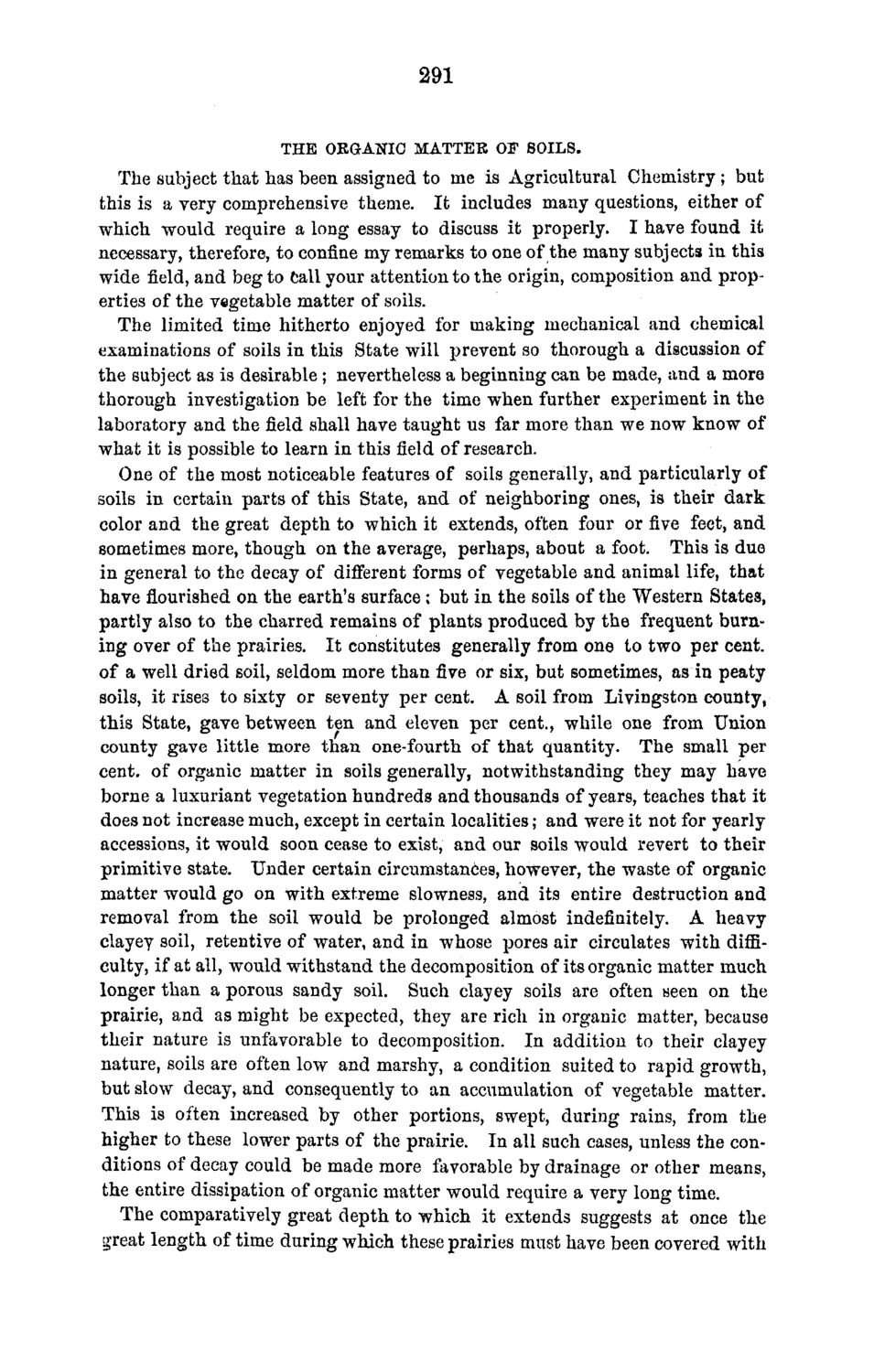| |
| |
Caption: Board of Trustees Minutes - 1870
This is a reduced-resolution page image for fast online browsing.

EXTRACTED TEXT FROM PAGE:
291 THE ORGANIC MATTER OF SOILS. The subject that has been assigned to me is Agricultural Chemistry; but this is a very comprehensive theme. It includes many questions, either of which would require a long essay to discuss it properly. I have found it necessary, therefore, to confine my remarks to one of the many subjects in this wide field, and beg to call your attention to the origin, composition and properties of the vegetable matter of soils. The limited time hitherto enjoyed for making mechanical and chemical examinations of soils in this State will prevent so thorough a discussion of the subject as is desirable; nevertheless a beginning can be made, and a more thorough investigation be left for the time when further experiment in the laboratory and the field shall have taught us far more than we now know of what it is possible to learn in this field of research. One of the most noticeable features of soils generally, and particularly of soils in certain parts of this State, and of neighboring ones, is their dark color and the great depth to which it extends, often four or five feet, and sometimes more, though on the average, perhaps, about a foot. This is due in general to the decay of different forms of vegetable and animal life, that have flourished on the earth's surface; but in the soils of the Western States, partly also to the charred remains of plants produced by the frequent burning over of the prairies. It constitutes generally from one to two per cent, of a well dried soil, seldom more than live or six, but sometimes, as in peaty soils, it rise3 to sixty or seventy per cent. A soil from Livingston county, this State, gave between ten and eleven per cent., while one from Union county gave little more than one-fourth of that quantity. The small per cent, of organic matter in soils generally, notwithstanding they may have borne a luxuriant vegetation hundreds and thousands of years, teaches that it does not increase much, except in certain localities; and were it not for yearly accessions, it would soon cease to exist, and our soils would revert to their primitive state. Under certain circumstances, however, the waste of organic matter would go on with extreme slowness, and its entire destruction and removal from the soil would be prolonged almost indefinitely. A heavy clayey soil, retentive of water, and in whose pores air circulates with difficulty, if at all, would withstand the decomposition of its organic matter much longer than a porous sandy soil. Such clayey soils are often seen on the prairie, and as might be expected, they are rich in organic matter, because their nature is unfavorable to decomposition. In addition to their clayey nature, soils are often low and marshy, a condition suited to rapid growth, but slow decay, and consequently to an accumulation of vegetable matter. This is often increased by other portions, swept, during rains, from the higher to these lower parts of the prairie. In all such cases, unless the conditions of decay could be made more favorable by drainage or other means, the entire dissipation of organic matter would require a very long time. The comparatively great depth to which it extends suggests at once the great length of time during which these prairies must have been covered with
| |